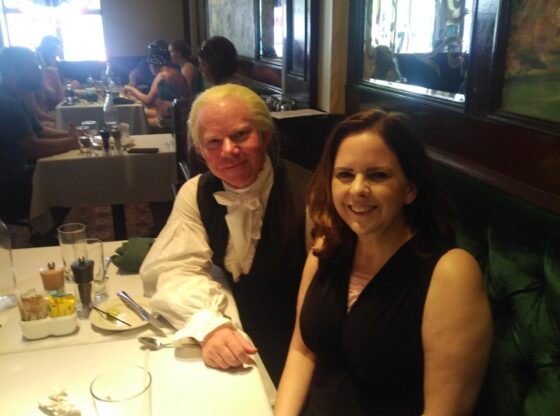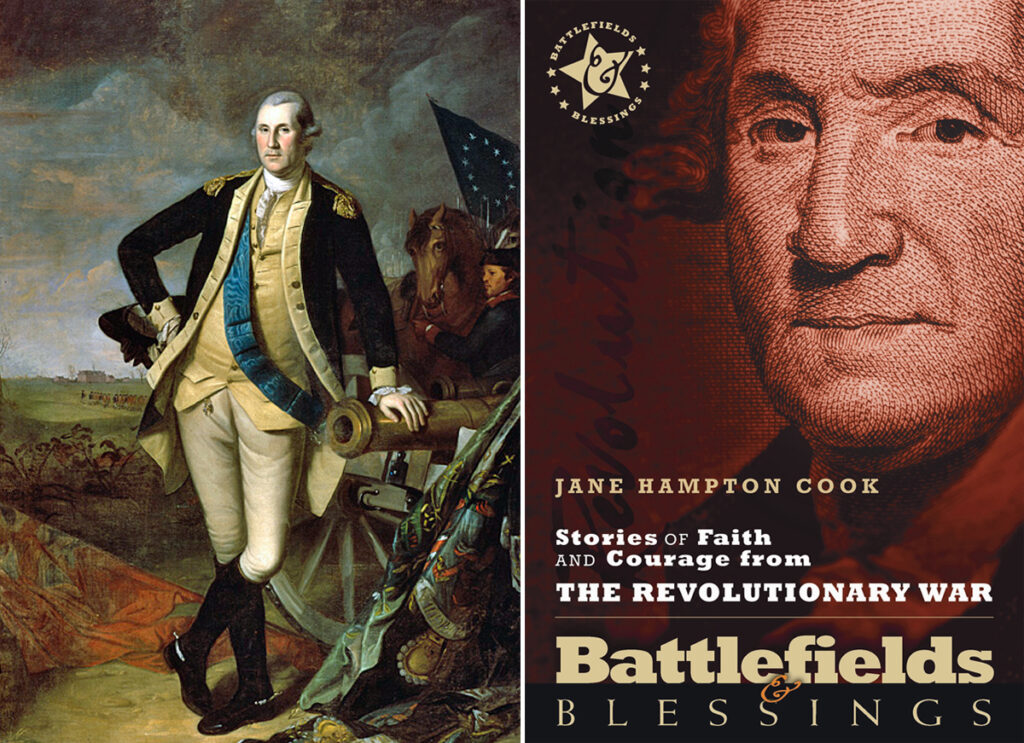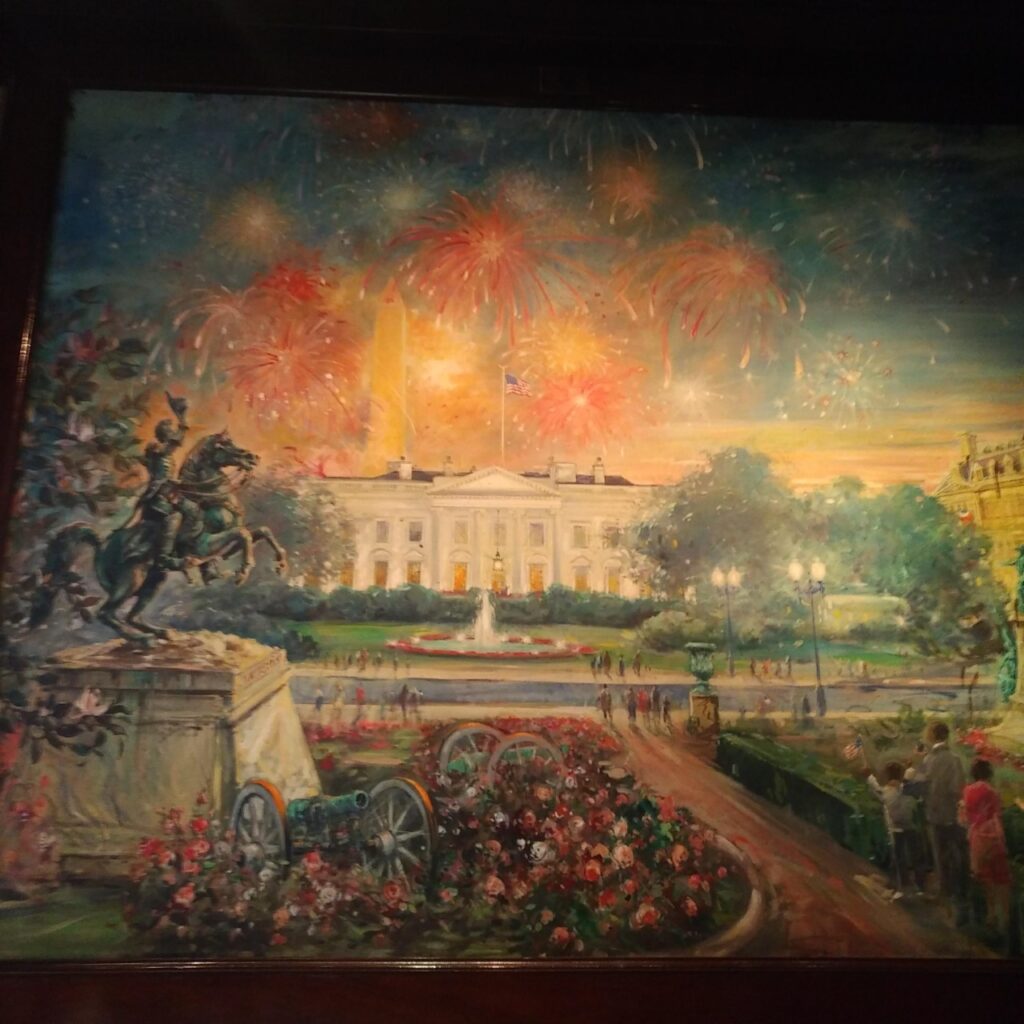
Jane had the opportunity to go to lunch with historical re-enactors or portrayers of Ben Franklin, President James Madison, and Secretary of the Treasury Albert Gallatin.
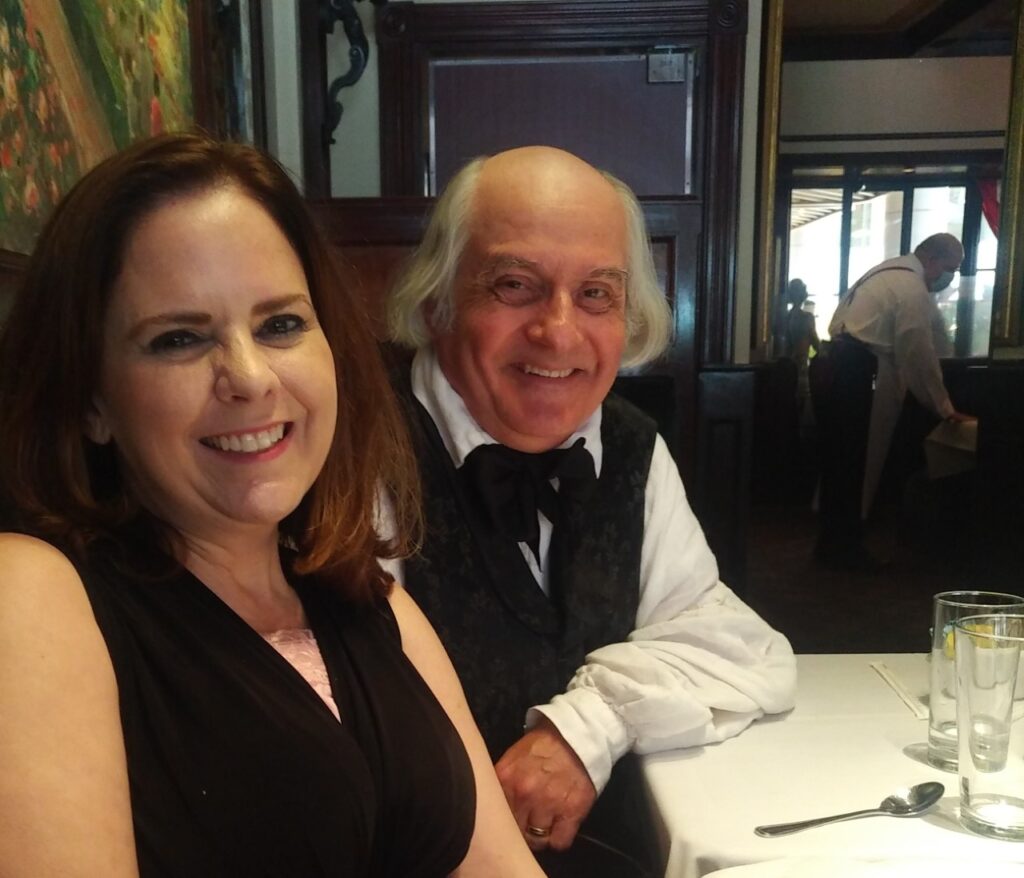
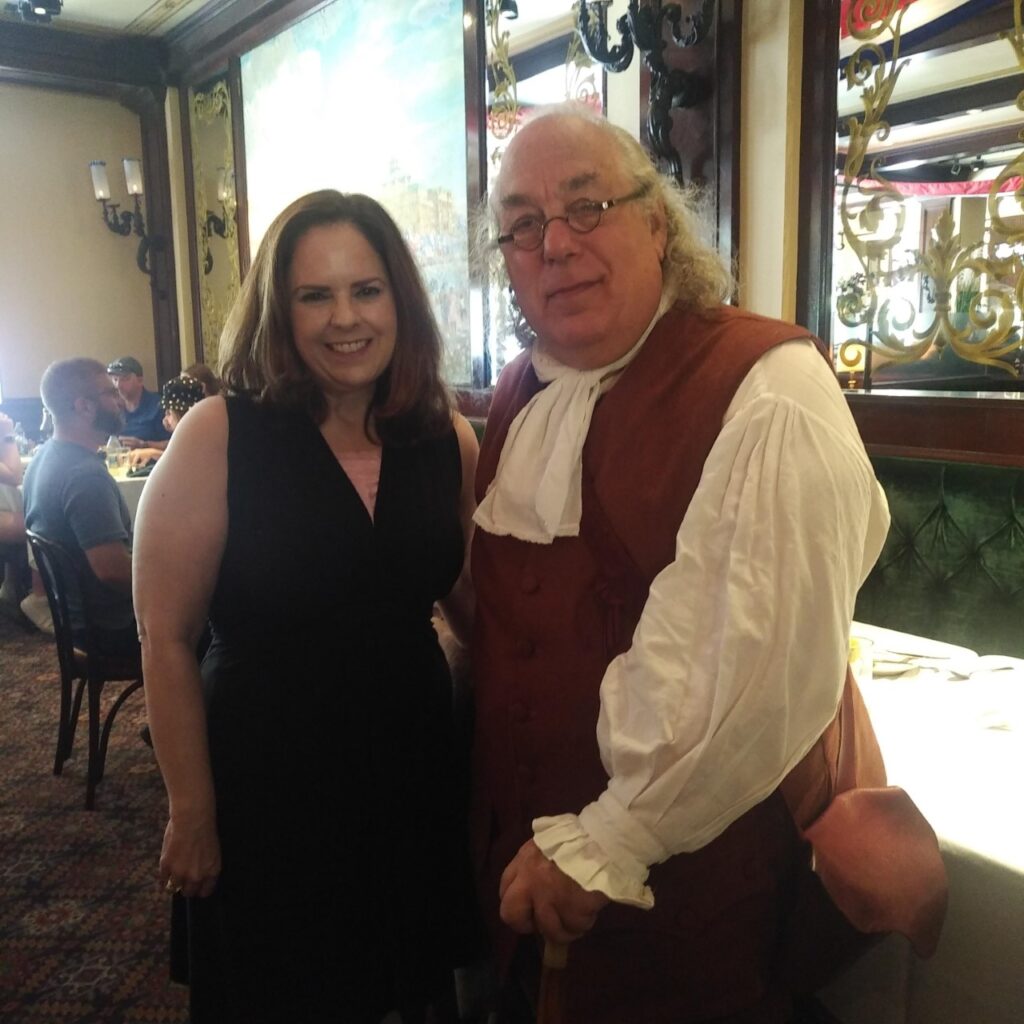
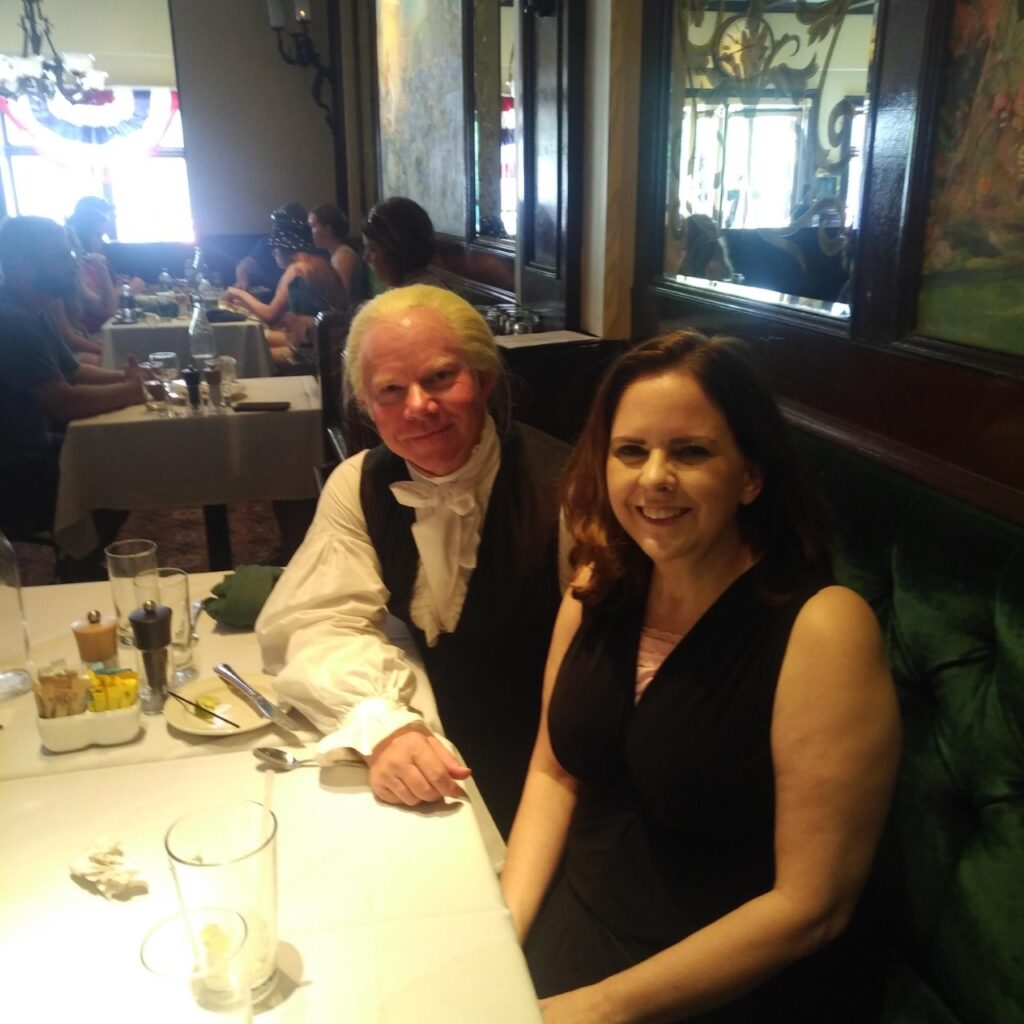
Franklin brought up the moment that turned him into an American patriot. Jane wrote about this event where Franklin was accused of being a traitor and put on trial at London’s Cockpit Tavern in her book Stories of Faith & Courage from the Revolutionary War.
Below is an excerpt:
Silent Ben
The abuse had gone on for more than an hour. This Philadelphian printer known for his pithy sayings remained speechless while his London accusers berated him in the most abusive language. Unlike the friendly but frank questioning he received from members of Parliament over the Stamp Act in 1766, this inquiry would forever injure Benjamin Franklin. Only a hangman’s noose was worse than this execution of verbal abuse.

Jane with Ben Franklin
“Spy, traitor, would-be assassin, rebel” were among the many accusations hurled against Franklin that day, January 29, 1774.
Franklin was quite familiar with the three dozen men surrounding him at London’s Cockpit Tavern. After all, they had been his friends. Together they had shared many glorious moments, such as cheering the king at his coronation fourteen years earlier. Franklin later reflected that his time in London was the happiest in his life. He loved the crown, the king, and the colonies. The rising conflict, however, had tormented his loyalties. When his friends, the distinguished advisors to the king called the Privy Council, encircled him that day at the tavern, he realized he had to make a choice.
Their verbal abuse and accusations were so grave Franklin might as well have been a prisoner in the Tower of London. Franklin chose the most appropriate response possible in this fake trial: silence.
Franklin historian Stacy Schiff described the moment in an interview for The History Channel Presents: The American Revolution, 2006. She said that Franklin was “dressed down” and “humiliated,” that he didn’t say a word. While wearing his old clothes, a blue velvet suit, he stood with his “head erect.” He stood “stock still.”
Franklin’s “crime” was sending to patriot leaders in Massachusetts letters written by Gov. Thomas Hutchinson five years earlier. The letters revealed that Hutchinson supported further restraint of liberty in the colonies. The king, Parliament, and Privy Council were so angry at Franklin he might as well have spied for France. The prime minister refused to give Franklin a hearing. He received no justice, just the mock trial at the tavern.
The clock tick-tocked for more than an hour, until the final accuser finished hurling insults at Franklin. When it was over, Franklin shook hands with “the last of his friends” and left the tavern in the same way he had stood: in silence. Within two days, the king withdrew Franklin’s appointment as postmaster general. He packed his bags, boarded a ship, and returned to Philadelphia.
“Many people have dated that as the moment Franklin becomes a revolutionary,” commented Schiff.
“Spots of Dirt thrown upon my Character, I suffered while fresh remain; I . . . rely’d on the vulgar Adage, that they would all rub off when they were dry,” Franklin later wrote. And when they were dry, Franklin wore the tattoo of independence.
If pithy sayings made Benjamin Franklin a public celebrity, silence turned him into a revolutionary.[i]
“Even a fool is thought wise if he keeps silent, and discerning if he holds his tongue” (Proverbs 17:28).
Prayer: Father, I pray for discernment today, to know when to hold my tongue, and when to speak.
[i] “Benjamin Franklin,” Falmouth Packet Archives, http://www.falmouth.packet.archives.dial.pipex.com/id74.htm [accessed June 2006]; and Stacy Schiff, “Interview for History Channel,” The History Channel Presents: The American Revolution, 2006, author transcription, 2006; and Benjamin Franklin, “Benjamin Franklin in His Own Words,” online exhibit, Library of Congress. http://www.loc.gov/exhibits/treasures/franklin-break.html [accessed July 2006].


